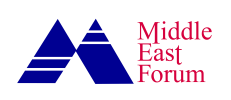During his Middle East tour, President Donald Trump remarked that Tehran should “say a big thank you” to Qatar’s emir, Sheikh Tamim bin Hamad Al Thani, who personally urged Trump not to attack Iran.
Why is Qatar so supportive of the Islamic Republic, while most of its Arab neighbors are wary of, if not outright hostile toward, Tehran—especially given Iran’s continued meddling across the Arab world? Beyond ideology and regional geopolitics, Qatar has a powerful economic incentive: maintaining smooth ties with the clerical regime that controls its vast and troubled northern neighbor.
Iran’s South Pars and Qatar’s North Dome are geologically a single [natural gas] field divided by a political boundary.
In business, having a reckless competitor can sometimes be a hidden blessing—but what happens when your neighbor mismanages its share of a shared resource and earns far less than you? That is exactly Qatar’s position in South Pars, the world’s largest natural gas field, where Iran’s chronic mismanagement and international sanctions have left it far behind. Iran’s South Pars and Qatar’s North Dome are geologically a single field divided by a political boundary with zones called by different names in Doha and Tehran.
Qatar has capitalized on this disparity. Its sovereign wealth fund—almost entirely funded by oil and gas exports—has surged to $524 billion in 2025. A staggering 75 percent of that revenue comes from North Dome.
Qatar so far has produced 2.5 times more natural gas and condensate (a type of ultra-light oil) from its share of the field than Iran. As a result, it has become the world’s second-largest exporter of liquefied natural gas, the top exporter of helium, and has extracted many times more oil than Iran.
According to the International Energy Agency, the field holds an estimated 1.8 trillion cubic feet (approximately 51 trillion cubic meters) of in-place natural gas and around 50 billion barrels of condensate. These reserves constitute roughly 19 percent of the world’s recoverable gas resources, making it the largest conventional hydrocarbon accumulation globally.
Qatar’s aggressive extraction has even drawn some of the gas reserves from the Iranian side toward its own and caused early pressure loss on the Iranian section.
While Iran’s output continues to decline due to a lack of investment, sanctions, and technical failures, Qatar has maintained high production levels through partnerships with Western companies. It has installed massive 20,000-ton platforms—15 times heavier than Iran’s—and fitted them with large-scale compressors. It also has signed $29 billion in new contracts with international firms to raise production by 60 percent over the next two years.
In contrast, Iran’s Pars Oil and Gas Company Chief Executive Officer Touraj Dehghani confirmed on May 18 that multiple blocks on the Iranian side are losing pressure and urgently require compression systems.
Tehran awarded a $17 billion contract to three firms linked to the Islamic Revolutionary Guard Corps to build 4,000-ton platforms with standard compressors.
Only a few Western companies possess the technology to build such large compressors and platforms. Yet, in response, Tehran awarded a $17 billion contract to three firms linked to the Islamic Revolutionary Guard Corps to build 4,000-ton platforms with standard compressors. There is widespread skepticism that these firms can manufacture, let alone install, such equipment.
An Iranian-born engineer working on the Qatari side told the Middle East Forum—on condition of anonymity due to the sensitivity of the matter—that beyond compressors, each installation requires condensate separation units and power generators that cannot fit on a 4,000-ton platform. Iran, he noted, has no experience building platforms above 2,000 tons, casting further doubt on the oil ministry’s ambitious plan.
The stakes are high. South Pars accounts for 75 percent of Iran’s natural gas production. Without compression facilities, the field will lose ten billion cubic meters of output each year—roughly 5 percent of total production, according to the oil ministry.
While Qatar is preparing to reclaim its crown as the world’s top liquified natural gas exporter, aiming to surpass the United States in the coming years, Iran already suffers year-round gas shortages. Parliament’s research center has warned that within a decade the government may be able to supply only one-third of domestic gas demand.
Iran’s losses extend to oil as well. It began extracting crude from the field’s oil layer in 2007—two decades after Qatar—and today produces only 2,000 barrels per day, or 0.6 percent of Qatar’s output from the same layer. Iran initially contracted local firms to reach 35,000 barrels per day and briefly achieved 20,000 barrels per day, but with no further development, production has collapsed.
Meanwhile, Qatar controls 35 percent of the global helium market, extracting it entirely from South Pars.
Meanwhile, Qatar controls 35 percent of the global helium market, extracting it entirely from South Pars. Iran, despite sharing the same resource, has never installed the necessary equipment to capture this high-value gas. Qatar now plans to raise its global helium share to 46 percent by 2029.
The irony is striking: Customs data show Iran imported $5 million worth of helium last year—some of it from Qatar—to meet domestic needs.
Despite public claims of strong political ties, Qatar has not even allowed the opening of a joint trade office with Iran. Iran’s total exports to Qatar stand at just $120 million. Worse, according to the head of the Iran-Qatar Chamber of Commerce, payments for Iranian goods must first pass through the United Arab Emirates and then be converted into cryptocurrency, costing exporters around 20 percent of their value.
The uncomfortable truth for Doha is that if a competent and secular government ever replaces Iran’s clerical regime—one capable of ramping up gas production from South Pars—Qatar almost certainly would lose. An Iranian state with strong ties to the West and the capacity to properly develop its share of the field would no longer need Qatar as an ally and could pose a serious challenge to Doha’s dominant position.







